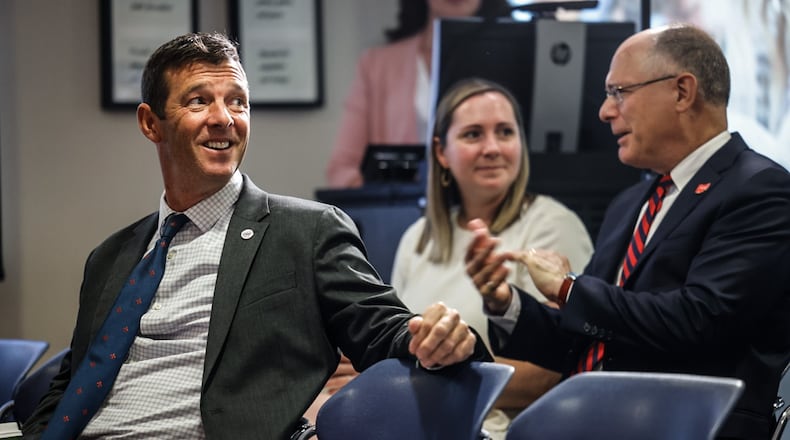DeWine visited University of Dayton’s Bombeck Family Learning Center Wednesday to see how the school is teaching early literacy and to talk about the science of reading rollout in Ohio. He noted that Fordham Institute, a conservative education think tank, recently ranked UD as one of the best universities in the state for creating educators who know how to teach literacy based on the science of reading.
DeWine advocated for additional funds to be put into the recently passed budget for this rollout. The result was $86 million for educator professional development, $64 million for curriculum and instructional materials and $18 million for literacy coaches.
A total of $26 million in federal COVID-19 funds are available for nonpublic schools to use to implement the same science-based ideas in their school.
In curriculums based in the science of reading, the emphasis is on phonics and teaching skills to identify words. Whole language focuses on using speaking, writing and sounds to teach children to read, whereas the science of reading uses neuroscience.
Credit: JIM NOELKER
Credit: JIM NOELKER
DeWine said the state is launching a new program, Read Ohio, aimed at getting all Ohioans, no matter what age they are, to learn to read. That includes preschoolers, as well as adults and high schoolers, who may have either dropped out or been promoted through grades without appropriate intervention.
Preschoolers would still be taught to read in kindergarten, DeWine said, but preschool will be focused on getting kids ready to read.
The rollout comes while the Ohio Department of Education is undergoing a transformation. Most of the work the department does is being transferred to the new Ohio Department of Workforce and Education, which will be under the governor’s office rather than the state school board, a 19-member mix of elected and appointed officials.
The only parts the Ohio Board of Education will still oversee are the licensing of teachers and land transfers.
But the Ohio Department of Education is overseeing the science of reading implementation, with resources on their website for science of reading instruction. Chris Woolard, interim superintendent of public instruction, said the budget provided for up to 100 literacy coaches, available to the lowest-performing schools in the state.
“This is really important that we’ve been doing a lot of these tours and the need for those literacy coaches is a theme that continually emerges from what we see schools and districts that are that are doing this well,” Woolard said.
DeWine said he didn’t anticipate any issues with getting the science of reading rolled out with the transition. But he also said the top three positions still need to be filled at the new ODEW, but he didn’t have an exact timeline on when that would happen.
“This is going to be seamless,” DeWine said.
About the Author


